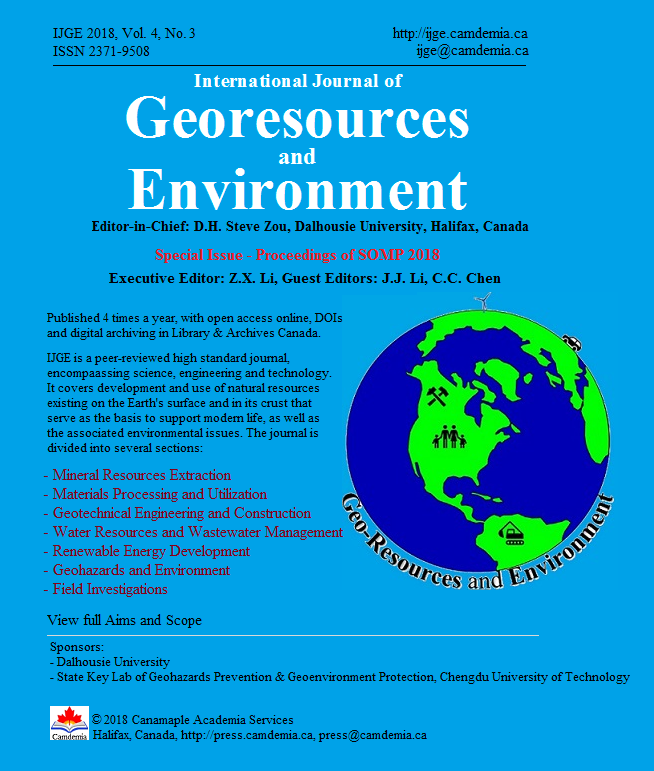Challenges and Opportunities of Higher Education for International Mining Engineers in China: Based on the Practice at Chongqing University
DOI:
https://doi.org/10.15273/ijge.2018.03.008Keywords:
mining engineering, international, innovative, interdisciplinary, education systemAbstract
Under the background of mineral industry transforms towards global and sustainable development as well as the establishment of innovative country in China, higher requirements for the mineral engineering education have been putting forward. Based on the research on the demands of mining engineers in the domestic and foreign, the mining engineering education objective, which includes the characteristics of international, innovative and interdisciplinary (referred as ‘3I‘), was determined. To achieve the ‘3I‘ education objective, the international outlook, the economics and management knowledge, as well as the practical ability for knowledge using were enhanced in the new curriculum. Substantially, a new education system includes three sub-education models was generated. Practical outcomes show that the education system is effective on improving the overall quality of students, especially the innovative ability. In the end, the flaws in learning and teaching in the current education system were discussed, including students‘ concerns on the global level and understanding different cultures should be strengthened, as well as the teaching contents and teaching philosophy have to satisfy the changes and the demands of the industry development.Downloads
Published
Issue
Section
License
Copyright, Terms and Conditions
The International Journal of Geohazards and Environment (the Journal) is published by Canamaple Academia Services (the Publisher) online with open access, under a Creative Commons Attribution-Noncommercial license (CC-BY-NC) (http://creativecommons.org/licenses/by-nc/4.0/). Authors (the Authors) submitting papers (the Work) for publication in the Journal automatically agree to the following terms and conditions.
1. Under the license (CC-BY-NC), Authors give permission for others to share and reuse the Work, as long as the original source and author(s) are properly cited (i.e. a complete bibliographic citation and link to the Journal website) and the material is not used for commercial purposes. Any sharing or reuse must however indicate the original CC-BY-NC license terms of the work.
2. Authors transfer and assign to the Publisher all copyright in and to the Work. However Authors retain all proprietary rights except the copyright, related to the Work and also retain the rights a) to use, reproduce, distribute, and publicly display the Work in any medium in connection with the Authors‘ academic and professional activities, such as teaching, presentations and lectures, b) to create derivative works from the Work and to make full use of the Work in future research and publications, c) to authorize others to make any non-commercial use of the Work, d) to make both the pre-published and final-published versions available online in institutional and/or disciplinary repositories or on their own websites with a citation and link to the original paper published in the Journal.
3. Authors warrant that the Work is their original work, it is not copied from anywhere or anyone else, they are totally responsible for the authenticity, originality, validity and accuracy, and the facts and views are their own, that the Work contains no matter which is defamatory or infringes any literary or proprietary rights, intellectual property rights, or any rights of privacy, and that the Work has not been simultaneously submitted to any other journals or publishers. Authors further agree that their manuscripts whether accepted or rejected will not be returned and the rejected manuscripts will be disposed at the journal editor's discretion.
Disclaimer: The Publisher, the Journal and the editors accept no responsibility for statements or opinions expressed by authors. Use of information and materials in the Journal is the sole responsibility of users.


